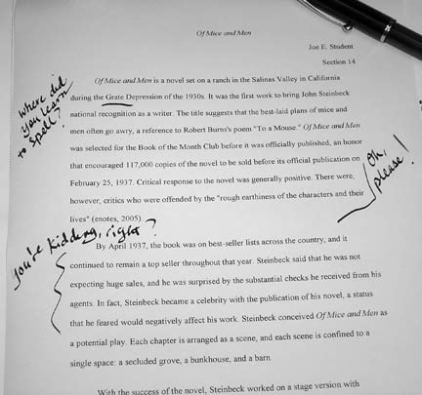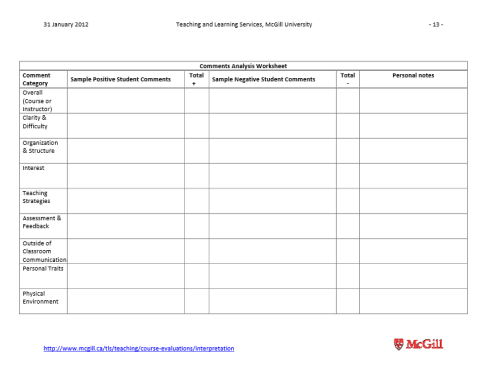Let’s talk about Teaching Assistants. The structural importance of TAs is on the rise and, in Canada at least, mammoth introductory surveys require an army of graduate student labourers. This is because we are trying to ward off the crisis in the universities by exploiting not adjuncts (as they do in the United States), but TAs. We’ll just call that a Canadian cultural quirk. Actually, there’s a lot to say about the differences between Canadian and American Universities at the moment, but that’s a topic for another day. For now, I want to stick to the common ground and discuss the role and training of TAs, not how many are employed at any given university.
[The Simpsons’s take on TAs: graduate students being whipped by their supervisor for stealing crumbs at the park before their grading is done]
I’ve had all sorts of TAs: graduate students who have had completely different careers before entering the academy, MA students working in fields completely unrelated to the course to which they’ve been assigned, and senior Ph.D. students who study the relevant field. I’ve also had both men and women work under me in this capacity – though it’s been mostly men, I think because I tend to teach political history – and I have supervised TAs both before and after I completed my own doctoral degree. Some of my TAs have been brilliant, innovative, and natural teachers. Others have needed more guidance to get them on the right path. And then there were the ones which were total disasters, but who couldn’t be fired because their Teaching Assistantship was part of a funding package designed to finance their studies – thus highlighting the unconventional nature of this form of “employment.”
Now, the first time I had TAs I started out naively thinking that this was a relatively normal employer-employee situation, albeit complicated by the fact that I was used to interacting with these people in a non-hierarchical way (the first year I had TAs, I was still a Ph.D. student, and one of the gentlemen working for me had invited me to his house for a dinner party just before he was assigned to my course). I went over my expectations at the start of the semester, and even spent time workshopping how to grade papers, despite the departmental training they had all already received. But I thought that this was the extent of my obligation to my new assistants who were there, I assumed, to make my job easier. Go ahead, laugh! It’s undeniably funny. And if I could go back in time, I would slap past Sarah in the face and try to knock some sense into her because, in many ways, TAs made teaching a heck of a lot more difficult. Coordinating a team, trying to ensure grades were allocated fairly and consistently, and simply trying to make sure tasks were completed on time, all added stress to my already stressful life.
Part of the problem was that it had all seemed so clear-cut at the start. We were all getting paid to do a job. We all had contracts, and the TAs even got an hourly breakdown of their tasks, which implied this was a work situation where people were being paid to deploy skills which they already possessed. Ha! How wrong I was! And that’s when someone explained to me that “TAs are not helpful; they are an opportunity for mentorship.” As mean as that sounds – and if I’m being honest, these words were very much the product of exasperation and frustration – there was a useful paradigm shift embedded in that angry outburst. One needs to remember that TAs are not there merely to work; they are there to learn how to teach and how to deploy the knowledge and skill sets amassed during their studies. It was only after I took this (albeit unintentional) advice on board that TAs became more helpful, and the entire situation more manageable. My more recent experiences with TAs have been significantly less problematic, and I firmly believe that this is because I now consider their position to be one which straddles the line between employee and student.
MA and Ph.D. students are not just apprentices to established researchers; they are teacher’s apprentices as well. And although there is a mentorship system in place that assigns academic supervisors to guide these men and women through the labyrinthine process of researching and writing, there is no formal equivalent to help graduate students with the equally difficult terrain of seminar leadership and grading. Instead, we ask them to figure it out on their own, because “they’re smart people.” After all, we all had to figure it out on our own. If we can do it, surely they can too, right? Wrong. And wrong for so many different reasons. Most obviously, I don’t know about you, but I don’t think I have ever really “figured it out.” In fact, I suspect I will spend the rest of my life trying to improve and to adapt my teaching to student needs – even if I’m further along in this process than my TAs. Moreover, anyone who believes that they knew how to lead a seminar or grade papers the first time they were faced with these tasks is either superhuman or creatively reimagining the past. I know I didn’t know how to do these things. And grading, in particular, caused me problems because I had always been a good student. I didn’t know what a B, let alone a C+ paper looked like, and I was a nasty, vicious, beast of a marker as a result. Finally, some solutions just aren’t intuitive, and we will save our students, our TAs and ourselves a lot of hassle if we impart what little wisdom we do possess from the outset instead of waiting for problems to arise later on.
[I thought this image captured my early approach to grading quite nicely]
TAs will be exposed to numerous pedagogical mentors throughout their time in higher education, and a fundamental part of their education is the observance of different styles, so you can’t expect that they’ll be carbon copies of your pedagogical approach. What you can do is give them the tools to complete the tasks which you assign them, and expose them to as many different opportunities as you can so that they can eventually develop their own style. Some of this is basic, and you can do things like provide classroom guidelines. My own guidelines come in written form and stipulate the minimum feedback I’d like to see my TAs provide on student assignments. They also provide a rough estimate of what the average paper grade should be, explain the timeframe in which assignments must be marked, and outline a code of conduct vis-à-vis the undergraduates. But this is all pretty obvious. We also need to help TAs develop seminar strategies (it can be hard to find the best questions or group activities to facilitate these sessions), and to offer them the opportunity to give guest lectures.
All of this does, unfortunately, take time. And I have now learned to leave space in my schedule for a variety of mentoring sessions: help with grading, strategizing about how to deal with exceptionally quiet or especially loud students in seminars, how to keep notes for oral participation grades, and preparation for or debriefing after guest lectures. But my TAs do a better job, learn more, and ultimately everyone is a lot less stressed. I’m also starting to suspect that by making time for mentorship, I have actually become more efficient. Now I that I am targeting my energies, I just feel more sane. I have also opened up a space in which I can learn from my TAs, who sometimes have very innovative solutions to difficult problems. Most importantly, I feel like we are functioning more cohesively as a team, and that each of us is developing important people skills, which will be necessary assets as more and more of us seek jobs outside the academy. I’m a big proponent of teaching my undergraduates transferrable skills, so it makes sense that my TAs and I pick up some new tricks along the way too – learning to lead, follow, and generally play well with others.
I’ve written this post from the perspective of course lecturers, who for better or worse, have been placed in a supervisorial position, but I would love to hear from TAs about how to improve this relationship. What is especially frustrating as you take up Teaching Assistantships, and how can we help?





